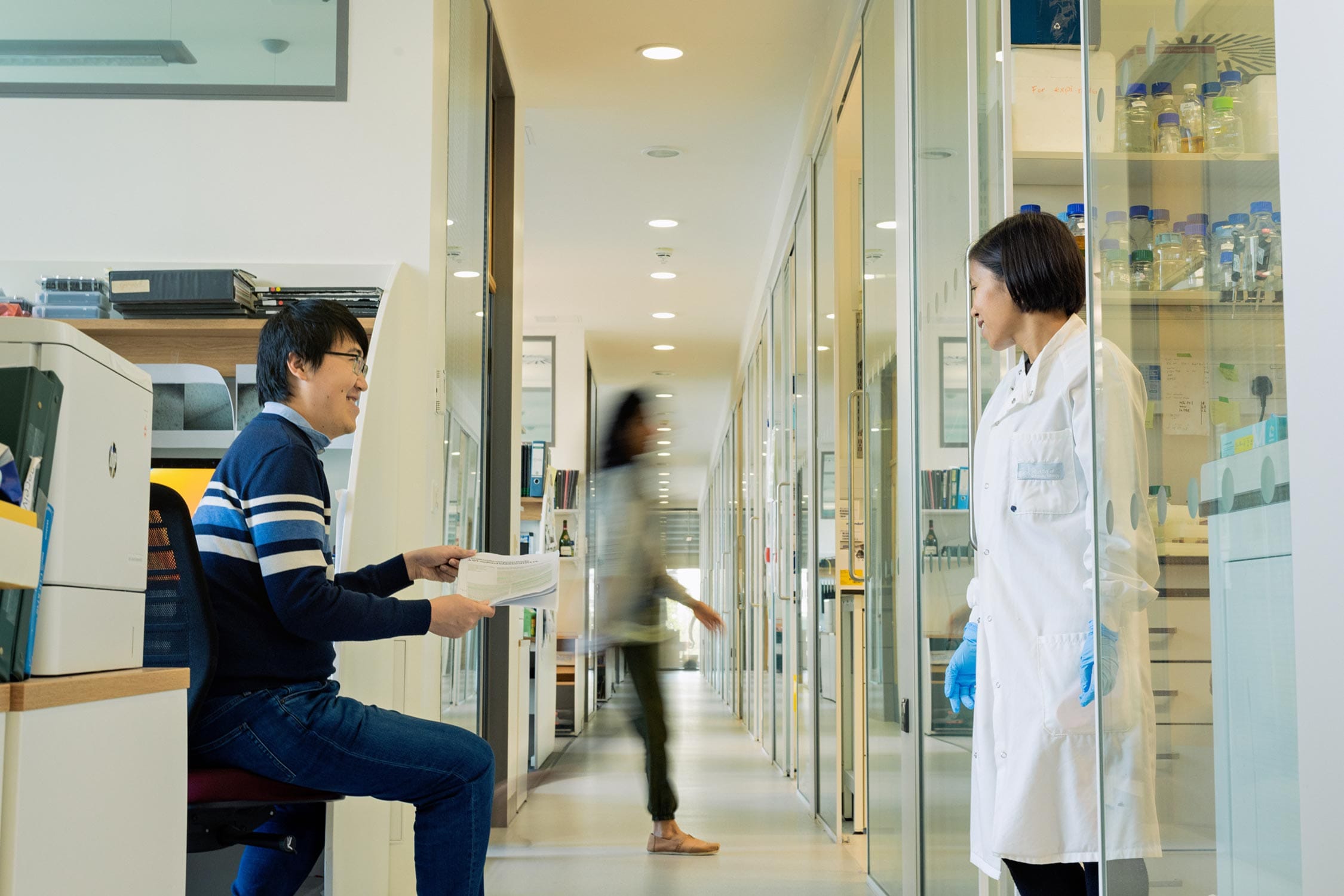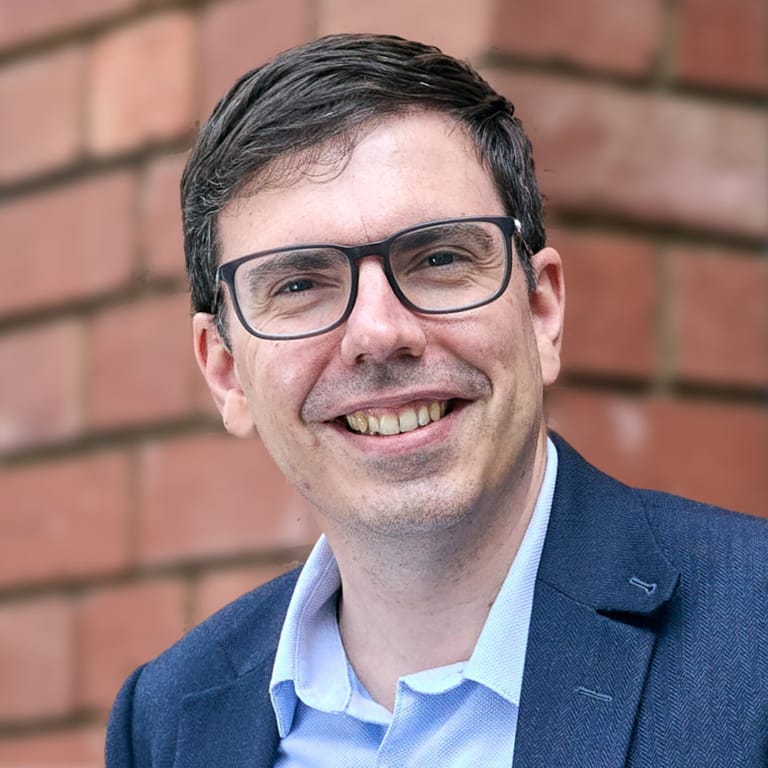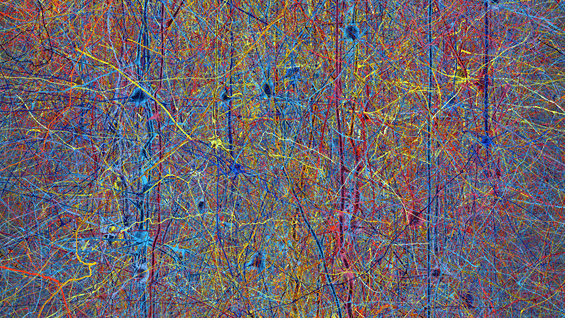
Dr Kelly Nguyen is a 2025 Lister Prize Fellow. Based at the MRC Laboratory of Molecular Biology in Cambridge, she is shedding new light on the molecular machinery that maintains genome stability.
We spoke to Kelly about her journey from chemistry to biology, her group’s recent breakthroughs in understanding telomerase, and how the Lister Prize is enabling bold new directions in her research.
Q: What first sparked your interest in science and led you to molecular biology?
Kelly: I actually trained as a chemist, so I didn’t do much biology at university. But I was always interested in science in general—maths and science were my favourite subjects at school. In my third year at university in Australia, I was trying to decide what to do next. I was fortunate to be in a programme where I did a research project every semester, mostly in maths and chemistry, but I wasn’t sure I wanted to stay in chemistry.
Then I attended a talk by Tom Steitz, who later won the Nobel Prize for his work on the ribosome. It was a spectacular talk, and it made me realise that structural biology was where I wanted to be. I joined a lab doing protein NMR, which allowed me to use my chemistry background while learning structural biology. My PI and the group were very supportive, and I learned a lot in that year. That experience set me on the path to apply for a PhD at the MRC Laboratory of Molecular Biology in Cambridge, which is a real hub for structural biology.
Q: Structural biology is a large and expanding field. What drew you to study telomerase?
Kelly: During my PhD, I worked on the spliceosome, which is a huge and dynamic complex responsible for removing non-coding regions from pre-mRNA. It’s similar in complexity to the ribosome, but even more dynamic, which makes it a real challenge for structural studies. I started with X-ray crystallography, but because the spliceosome has so many moving parts, it was difficult to crystallise. Around that time, cryo-electron microscopy (cryo-EM) was coming into its own, and I was encouraged to give it a try. That became my core technical expertise.
After my PhD, I moved to the United States for a postdoc, and that’s when I switched to studying telomerase. Telomerase is quite famous in the RNA field because it uses RNA to add DNA to the ends of chromosome DNA. But it is fascinating from both an evolutionary and structural perspective, too. There are evolutionary connections between the spliceosome and telomerase—they both seem to have evolved from ancient mobile genetic elements. I was lucky to join two labs at Berkeley, one specialising in cryo-EM and the other in telomerase, which allowed me to bridge those areas.

Q: Your research has uncovered new insights into telomerase structure and function. What are the most exciting discoveries from your lab so far?
Kelly: In the past few years, our lab has solved several high-resolution structures of telomerase, for example recently its dimerization mediated via the H/ACA ribonucleoprotein. This was a real breakthrough. One of the most exciting findings was the discovery that histones—proteins usually associated with DNA packaging—can bind to telomerase RNA. This was the first example of histone binding to RNA, and it opens up a lot of questions about how telomerase is regulated and whether histones have a broader role in the folding and function of RNA.
We’ve also expanded our expertise to look at complexes that regulate chromosome ends, or telomeres, more generally. We’re now building pieces of telomeres in vitro to see how they’re organised, and we’re aiming to visualise these processes in cells, which is a huge technical challenge but very exciting.
Q: What are the big questions you hope to answer in the next phase of your research?
Kelly: We know from classic experiments that there’s a limit to how long somatic cells can divide, which is linked to telomere length, but we still don’t fully understand how this is regulated at the molecular level. For example, most of our cells don’t have active telomerase, which is why telomeres shorten over time, but in cells that do have telomerase, the enzyme somehow maintains telomere length at a constant level. Understanding how this homeostasis is achieved, and how it relates to ageing and disease, is a major goal.
We’re also interested in alternative mechanisms of telomere lengthening, which are still quite mysterious but are relevant to about 10–15% of cancers. And with advances in protein design, we’re starting to explore ways to modulate telomerase activity, which could have therapeutic potential.
If you have an idea you believe is important, don’t be afraid to pursue it.
Q: How is the Lister Prize helping you pursue new directions or take risks in your research?
Kelly: The Lister Prize has been transformative. It’s a prize I’ve known about since I was a first-year PhD student, and it’s a real honour to join the community of Fellows. For my team, it’s a validation of all their hard work and gives us the confidence to keep pushing at the cutting edge.
What’s unique about the Lister Prize is its support for high-risk, high-reward projects. Traditional grants can be difficult to secure for risky ideas, but the Lister funding allows us to pursue blue-sky research, like using protein design to modulate telomerase. It’s also enabling us to grow the team and explore new lines of enquiry that wouldn’t be possible otherwise.
Q: What advice would you give to early-career researchers considering applying for the Lister Prize?
Kelly: I would say: be fearless. There’s always a risk–reward balance, especially early in your career, and it’s easy to be inhibited by fear of failure. But if you have an idea you believe is important, don’t be afraid to pursue it. I’ve failed a lot in my career—experiments fail all the time—but those failures make us better scientists. Be bold, and don’t let fear hold you back.
The Lister community is very friendly and supportive. At the Annual Meeting, I was initially a bit overwhelmed, but after two days it felt very natural. The talks were amazing, and I enjoyed the chance to have in-depth conversations with other Fellows. It’s a very interdisciplinary community, which I really value. I’ve already started discussing potential collaborations—for example, with Fellows working on pathogenic fungi, which could intersect with our work on telomerase and chromatin.

Q: Outside the lab, what helps you recharge and stay inspired?
Kelly: I have a young daughter, so I spend most of my time outside the lab with her. I love running—I run every day, often with her in the stroller—and I enjoy baking bread and cakes, especially for lab birthdays. It’s a nice way to connect with people and unwind.
Read more about Kelly’s work: https://www2.mrc-lmb.cam.ac.uk/groups/nguyen/



